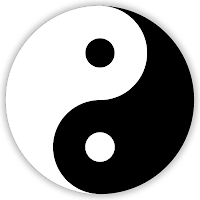What we think we know
A thumping heart, tingling in the stomach, sweaty palms, glistening eyes, a blush, a smile, the feeling of being wanted, an amorous virile sensation of colors seeming effervescent and music more livid; the flow of vitality between two people when they look in the other’s eye, sensuality, triggering the constant thought about ‘the one’; is what poets, writer, and lovers imagine and accept to be ‘LOVE’. Love has often been researched and explored; yet remains an enigma to many.
Artistic side to love
Artistic side to love
William Shakespeare introduced to the world the most epic love story of “Romeo and Juliet”, defining love as pure and amorous, unblemished and flawless. The fictional story has evolved as the bible of love to the masses. Passion between the lovers as they rebel the world to create one of their own. Longing to fall into each other’s arms till their last breath. A connect of emotions and souls that even death couldn’t vanquish! How beautiful it would be if love were indeed Shakespearean to believe in. If it is not truly all that Shakespeare so strikingly revealed, what is love really? “Oh no one really knows what love is;” is a dialogue repeatedly screened by actors in vivid emotions, frequently adapted by the common man to probably end a relationship in a civilized manner. Do we really not know what love is? One receives it in every phase of life. It may not be as dramatized as by Shakespeare, but it does exist. Everyone knows love; each desires it, all await it yet often several effortlessly let it go.
Scientific theory of love
Love has been be categorized in several modes; love for family, friends, pets, jobs, games, food, God etc., but love for “the one’ is still quite hard to imagine or accept. Attraction and appeal are always the first steps that generate powerful energies in the mind as well as the body to generate ‘intimate’ love. Romantic love evolves into companionate affection when interdependence sets in and ties are formed while physiological needs are simultaneously met. The triangular theory of love by Robert Sternberg emphasizes three important components of love: intimacy, passion and commitment.
Triangular Theory: Intimacy
Triangular Theory: Intimacy
Intimacy builds at a physical and psychological level when members of the dyad communicate openly. Empathy evolves when people connect with superior emotional quotients. Belongingness develops in this intimacy phase if one comes to understand that he or she can rely on the other and be accepted without any pretense. Emotional nakedness is a metaphysical construct and ought to be treated with respect. A couple that is intimate must learn to accept the partner the way he or she ‘is’, not how one ‘wants’ them to be. If one desires that change, it means that one wishes for the other to ‘fake’ themselves to be loved and accepted. The science of love disallows this.
Triangular Theory: Passion
Triangular Theory: Passion
Few things survive and thrive without passion. Passion is the fuel that drives dreams and desires. It may commonly be understood at a physiological level wherein physical needs of two people are met. However the conjectural aspect of attraction to the abstract also needs consideration. One can never be in love with the mere ‘body’. Passion truly exists when one loves in entirety. The thrust in the heart is the greatest when one can connect with the partner at all levels: physical, psychological, emotional, spiritual. That is true passion that drives a loving relationship. The love euphoria...
Triangular theory: Commitment
Triangular theory: Commitment
Commitment is the will and desire to pledge oneself to the object of love. It is not a pledge taken in reality but its subsistence is real indeed. Once attraction makes its mark and belongingness is shaped, commitment forms the cherry on top of the cake. The most important contributor to commitment is communication. Committed relationships yearn relentless interaction. Spending quality time (irrespective of the quantity) with each other helps build trust and acceptance. This helps build a bridge of emotional connect and one begins to generally seek approval of the partner at all occasions. The relationship becomes seasoned; grows above libido and attains unbreakable connection and acceptance.
Do opposites really attract?
Do opposites really attract?
We usually connect with people who have similar interests. At the same time we need to find complementing personalities to survive the long run. Life is not really a sprint it’s indeed a marathon. Endurance is imperative to survive to the finish line. The north pole of the magnet attracts the south. One needs opposing qualities for perfecting oneself. A talker needs a listener, the lazy one seeks a motivator, and the introvert can do well with the extrovert if they choose to better each other through their bond. The “opposites who attract” must accept the other’s traits that seem like flaws; and can help them overcome their shortcomings. It’s not an easy road to love euphoria. But there is a road. If you don't see it, you probably have to pave your own path. Every individual is unique, so is his or her relationship. Respect the beauty of the uniqueness to grow as a person and in love…
With contributions by Ms.Nikita Vyas
Psychology Intern at MINDFRAMES



No comments:
Post a Comment